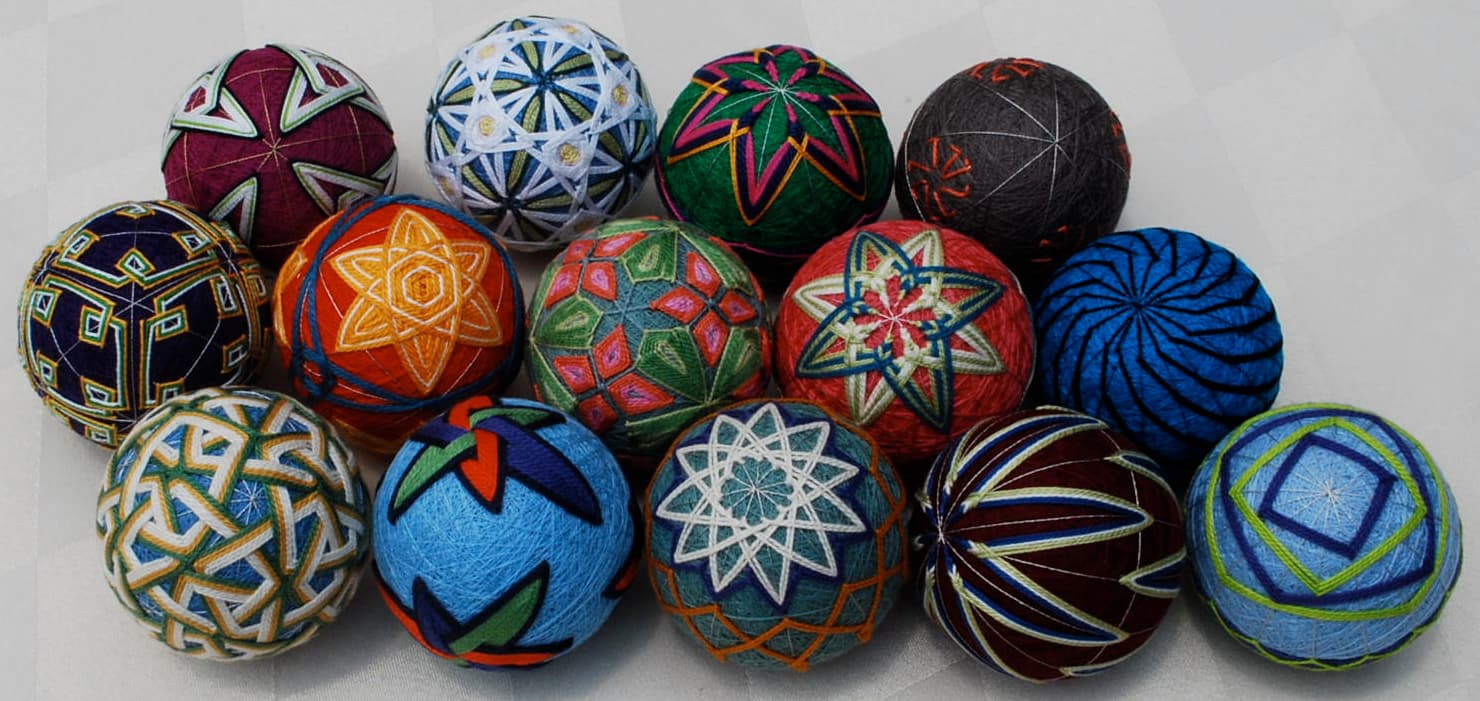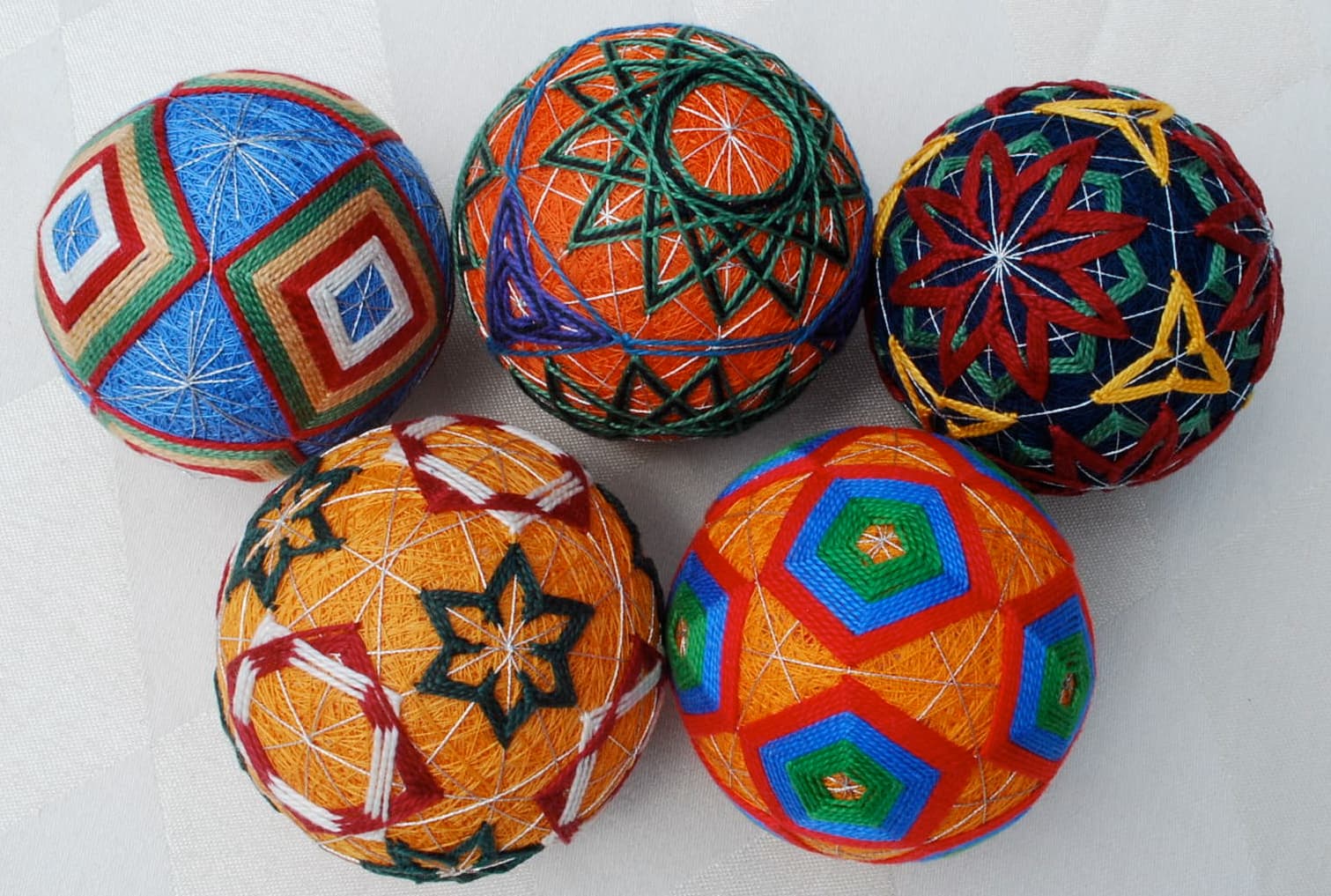Carolyn Yackel
Artists
Carolyn Yackel
Professor of Mathematics
Mercer University
Macon, GA
Statement
Carolyn Yackel is deeply moved by mathematics, particularly abstract algebra. However, she is unable to communicate that sense of excitement and well-being to the general public. Through the medium of fiber arts, Carolyn attempts to express the beauty that she observes within mathematics. Conversely, sometimes her fiber art work helps her to better understand mathematics.
Artworks

Spherical Symmetries in Temari
18.5 in x 9.5 in x 3.25 in
styrofoam, thread, pearl cotton, embroidery
2008
The fourteen finite spherical symmetry types are analogous to the seventeen wallpaper patterns or crystallographic groups. (A nice treatment of both is contained in The Symmetry of Things, by Conway, Burgiel, and Goodman-Strauss.) In Making Mathematics with Needlework (eds. belcastro and Yackel), Mary Shepherd proved that only twelve of the seventeen of the wallpaper patterns can be represented in cross-stitch on a rectangular grid. This set of temari balls was created as a constructive proof that all fourteen of the finite spherical symmetries can be realized in temari. The fourteen types incorporate seven Frieze patterns wrapped around a ball, three dual pairs of Platonic solids projected to the ball surface and embroidered with dihedral symmetry, three dual pairs of Platonic solids projected to the ball surface and embroidered with cyclic symmetry, and the bonus ball, which is a projected octahedron with cyclicly embroidered faces having mirrors across projected edges.

Truncated Temari
10 in x 6 in x 3.25 in
styrofoam, thread, pearl cotton, embroidery
2011
Consider cutting all the corners off of a cube in such a way that the resulting faces are regular octagons. The former eight vertices have become eight equilateral triangles. The final solid is called a truncated cube. Alternatively, deeper cuts could have been made at each corner so that the cuts connected midpoints of adjacent edges. In that case, the resulting faces would have been smaller (rotated) squares. The eight removed vertices would still have revealed eight equilateral triangles. The resulting solid this time is a cuboctahedron. This piece shows five truncated Platonic solids projected onto the sphere: the truncated cube, the cuboctahedron, the truncated tetrahedron, the truncated octahedron, and the icosadodecahedron. Two more of the Archimedean solids can be obtained by truncation from Platonic solids.